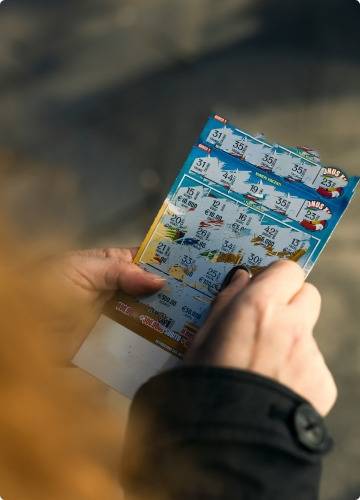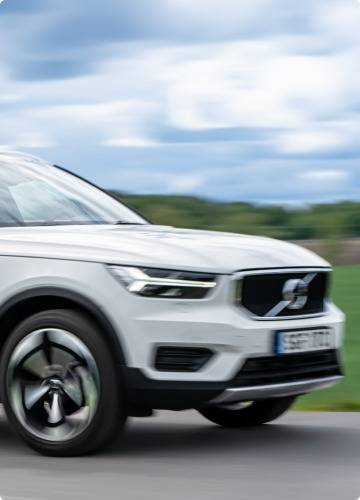The most important content marketing types
Online Marketing Magazyn, Nr 1 (38) / 2018, Author: Magdalena Tobiasz
Content marketing became necessary in building a promotional strategy. It is hard to find a brand that would not use its potential in their brand identity or sales campaigns. There are many different types of content marketing available. Let’s take a closer look at them to find out which one suits the brand the best, satisfies users’ expectations or is the most trendy.
The knowledge and the awareness of content marketing's importance as an element of the promotional strategy increase each year. According to research “B2C content marketing 2018” conducted by Content Marketing Institute, more than 86% of companies executes content marketing strategies. In Poland, the situation was similar which confirms the report by IAB Poland “Content marketing 2017”. 80 percent of brands use content marketing strategies (based on different types of content) in their promotional activities.
However, research conducted by CMI states that companies (more than ever) use content marketing to build consumer environment (“B2B content marketing 2017” Content Marketing Institute). Content helps to reach business objectives involving brand image building and sales. Additionally, relevant content is also used in SEO activities and boosting web traffic.
Content marketing helps to achieve following objectives:
- Building brand image and awareness
- Supporting sales
- Increasing user engagement
- Lead generation
- Building reach online and gaining customers
- Building a community
The 9 main types of content
Content marketing had evolved over the years and became one of the most important promotional tools. During that time many different types of content were created. Some are based on the text and do not require a lot of time and additional expenses. However, graphics or animated materials are created by a group of specialists.
Let’s analyze the following types of content, beginning with the basics and concluding with current trends in content marketing.
- The article
It is the most simple and the most used type of content. It not only provides information but also improves web positioning. However, articles should be written to attract users and not to please the Google algorithm. It is hard to find readers by only including a great number of key phrases; what’s important is the value of the article. The article’s layout is also important (the title suggesting the content of the article, the lead, paragraphs, headings, numbered lists), as well as additional elements (photos, tables, charts, etc.). It is also worth remembering to adjust the article’s content to one of the following types: a guide, an expert analysis, a review, the list, news or rankings.
- Infographics
Infographics are the great example of the visual content that combines text and graphics. According to CIM (“B2C content marketing 2018” Content Marketing Institute), 59% of marketers use it in their communication. Infographics often (but not always) are associated with statistics. They are also used to display analyses, summaries or interesting news. In order for infographics to be interesting for users, the text-graphics ratio needs to be maintained. If there is too much content, infographics lose their purpose. That is why it is necessary to select only the most important information. Infographics can become more attractive by adding animations.
- Newsletter
Despite the fact that in recent years there were doubts about the effectiveness of newsletters, it is still quite popular. 86% of marketers think it is one of the best ways to distribute materials (“B2C content marketing 2018”). Undoubtedly it is influenced by the fact that newsletter allows to reach the customer directly with the message. However, what truly improves newsletters’ effectiveness is their personalization. It is based on adjusting the message to recipients’ individual preferences. What information and when it will be delivered to the users depends on how many of them open or react to the message. According to the report “The State of Email Marketing by Industry”, 50% of e-mail marketing specialists use personalization and e-mail addresses’ segmentation when sending out newsletters. In Poland, however, only 13% of marketers take notice of personalization “Email marketing w liczbach 2017”, Freshmail.
- Ebook
Its popularity has risen along with the hype for handbooks. That is why e-books usually contain similar information - a manual, a guide or an expert publication. Considering that an e-book is usually shared for free through newsletters, it is possible to use it for lead generation and the process of creating e-mail address database. The preparation of the newsletter requires the involvement of many people, for instance, content and graphics specialists. In spite of this fact, more than 65% of marketers in the world use it (“Content Marketing Institute „B2B content marketing 2017”). However, in Poland, it is used by 38% of specialists (“Content marketing in Poland 2016” report prepared by Whitepress).
- Case study
This type of content is relatively challenging, and its development requires a lot of work. However, according to CMI’s report (2015’s report by Content Marketing Institute), case studies are used by more than 50% of marketers globally; in Poland, only 31% (“Content marketing in Poland 2016” report prepared by Whitepress). A case study is an expert document that includes an analysis of the event indicating the effectiveness of applied methods and solutions. Publications like that strengthen the brand identity as a specialist in a particular field. Case study can be prepared in the form of an article, an infographic, a video or an e-book.
- White paper
Content-related and professional materials allow to build an authoritative and competent brand. Given the fact that reports include a lot of data and provide particular solutions, they are a quality source of information for the users – often a necessary one that helps make a shopping decision. The white paper is a useful type to showcase research results or current trends. More than 71% of Polish marketers use it in their content marketing campaigns (IAB Poland, “Konsumpcja treści online a marketing 2016”).
- Video
The video is currently one of the most popular, the most searched as well as the most effective type of content. According to Hubspot data, 43% of online users search for and expects the video content, while 52% of specialists state that video increases conversion. The video is a great way to show customers the brand’s history as well as the offer. One of the advantages of the video is that it gives a lot of freedom - films can be directed, animated or 360°. One of the current trends is a live stream – the process of broadcasting video and sound of events, interviews, reportage or even original programs over the internet as they happen. Videos help to create a relationship with recipients by showing the human nature of the brand. The next advantages of videos are that they can be shared not only on YouTube but on social media, blogs or special platforms as well.
- Podcast
Audio recordings are a perfect solution for people who are often on the run and too busy to keep up with current news. The podcast is the radio program in a digital form share by RSS technology. Subscribers receive notifications about latest episodes and can listen to it on any device.
- Webinar
The webinar is an online workshop broadcasted live for those who signed up for it. Given that it is a real-time event, those who take part in it can interact by asking questions and leaving comments. This type of medium increases user engagement – one of content marketing’s objectives. If a brand wants to prepare an educational content, a webinar will be a great alternative to gain people’s interest.
Mix content
In spite of the fact that there are many types of content, marketers search for new solutions, which aim is to increase campaign’s effectiveness. Nowadays, content marketing requires creativity as well as focusing on innovation and experimentation. Marketers’ aim is to make the material that is attractive and adjusted to users’ expectations.
Text or visual content?
When trying to decide which type of content is the most effective, it is hard to come up with just one simple answer.
Visual forms dominate currently because of the following factors. People’s ability to concentrate is significantly lower (8-10 seconds). Specialists want to deliver somehow as much as information as possible but they do not have much time to interest and involve users. Given the fact that 90% of information that comes to the brain is visual (https://blog.kissmetrics.com/visual-content-you-need-to-use-in-your-marketing-campaign/) and that a person only needs 13 seconds to absorb the image (IAB, Konsumpcja treści online a marketing 2016), the visual content appears to be the best solution. However, when reading the text it takes several minutes to absorb information, depending on the length. All in all, it is easier to get user’s attention with a visual form instead of the text.
Another obstacle in creating an effective content marketing is the increase in an amount of content published online every day. It results in information overload. In such cases, it is necessary to search for new types of content that would be noticed and remembered by users. They should not be too demanding in terms of perception, hence the popularity of the visual content – the video in particular.
Despite the video’s advantage over the text, we should not give up on it. The text will always be seen as an expert content, whereas visual forms are associated with entertainment. The former delivers content-related matters in a better way, while the latter is used to evoke emotions. That is why in order to increase content’s effectiveness by 94%, text materials should be accompanied by graphic elements (Jeff Bullas http://www.jeffbullas.com/6-powerful-reasons-why-you-should-include-images-in-your-marketing-infographic/).


















